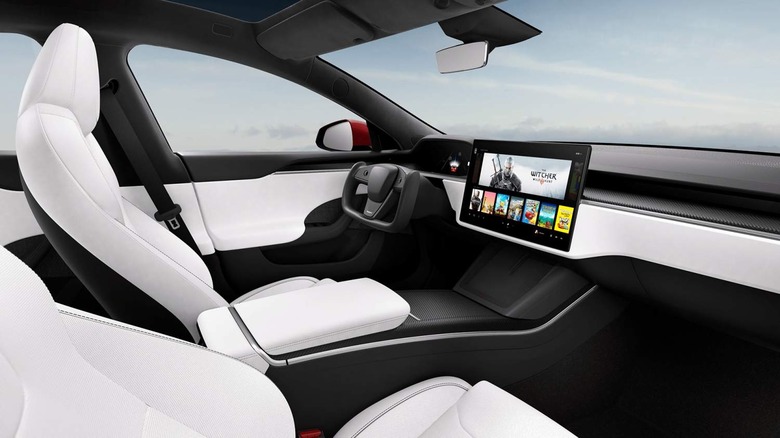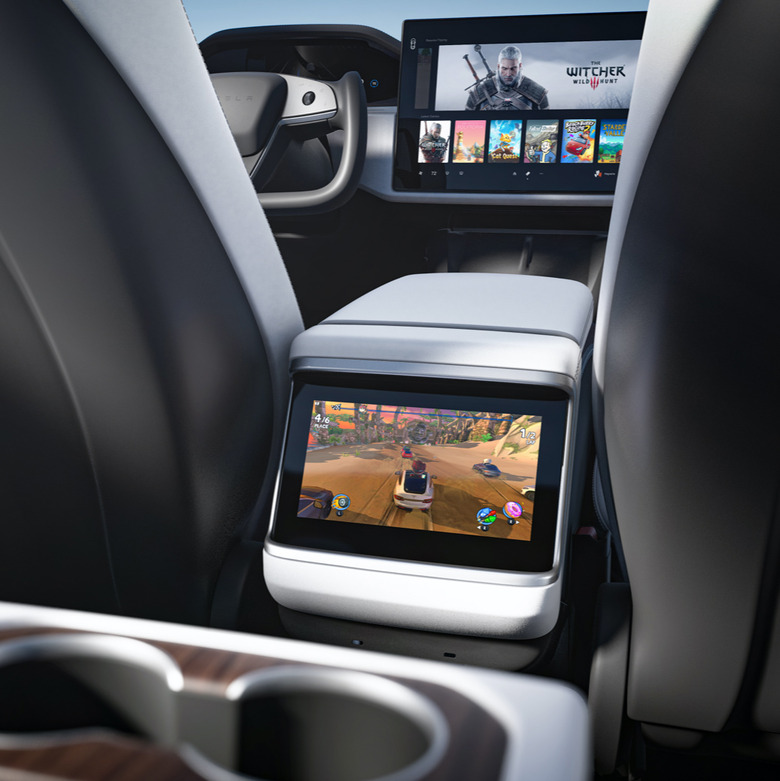Tesla taps AMD for AAA gaming rig in its most expensive EVs
Tesla's new Model S and Model X have an AMD-powered dashboard, the chip-maker has confirmed, spilling the details for the refreshed luxury EVs during its big Computex 2021 keynote. Tesla revamped its most expensive sedan and SUV earlier this year, promising at the time that it would deliver next-gen console levels of gaming power.
Given the, well, often underwhelming performance of car infotainment systems even just for scrolling through maps smoothly, that claim was met with a little skepticism from some quarters. Turns out, though, Tesla could be onto something.
The automaker hadn't talked about which chipset, exactly, the new Model S and Model X are using, but that didn't stop AMD from giving some details. It'll use an AMD Ryzen APU processor, plus a discrete RDNA2 GPU for graphics. The result, according to AMD, is up to 10 teraflops of compute power.
That, Elon Musk later pointed out on Twitter, is "PS5 level entertainment computing power."

Car infotainment systems have been gaining in power in recent years, as automakers push their dashboard tech beyond the bare minimum – and drivers, used to their smartphones and tablets, demand more from their vehicles. NVIDIA was an early winner in that category, though Qualcomm's automotive Snapdragon chips have also seen recent success. Intel, meanwhile, powers the Android Automotive OS system in the Polestar 2 EV.
Equally important, of course, is the software the vehicle is running. After all, a system capable of playing AAA game titles is all well and good, but if it doesn't have the OS to support that then potency doesn't really matter. That factor, combined with the demands of an increasingly tech-savvy set of buyers, has led to companies like Google pushing their own smartphone OS-derived platforms for not only dashboards but deep integration with the car.

Tesla, meanwhile, is doing that software development itself. This focus on gaming power is part of a push from the EV-maker to provide suitable ways to occupy those inside the vehicle, both while it's on the move and while it's waiting at a charger. We've seen video streaming like YouTube and Netflix before, along with basic gaming, but though the idea of an AAA title on a relatively small in-dash display seems silly at first, the thought of being able to play twenty minutes or so of your favorite title while you pause at a Supercharger actually sounds pretty appealing.
All that onboard processing, though, isn't just relevant for games. Tesla's increasing use of in-vehicle AI for its advanced driver-assistance systems like Autopilot – and, the automaker insists, eventually full self-driving – requires plenty of power, too. While Tesla makes its own "self-driving computer chip" for its vehicles, tapping AMD's GPU expertise as it leans increasingly on Tesla Vision could be an important step for improving machine learning and boosting reaction times.
